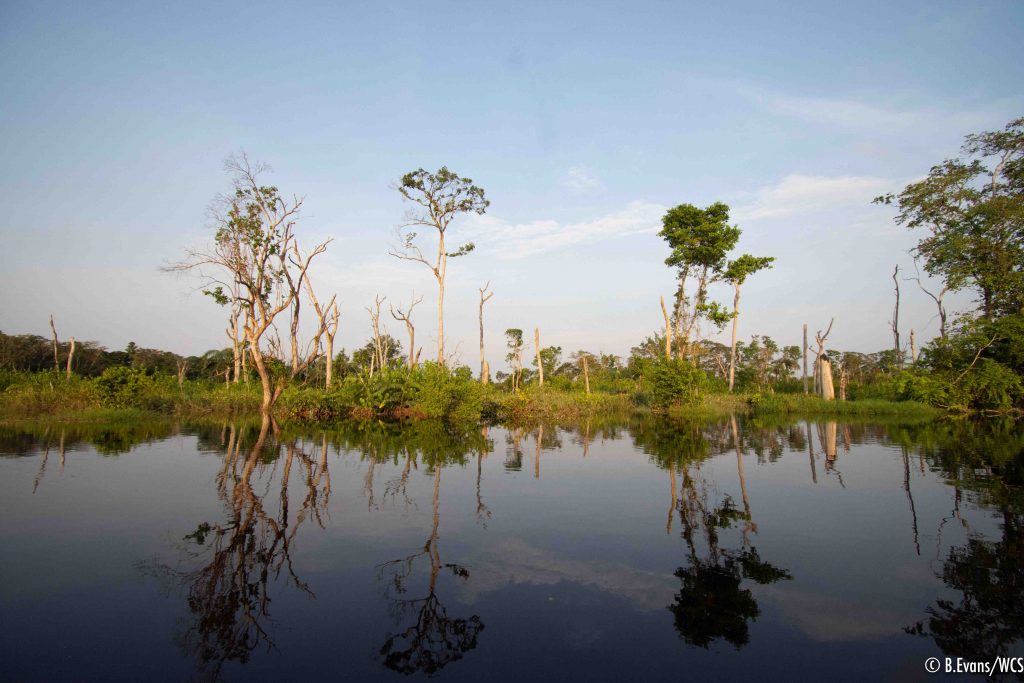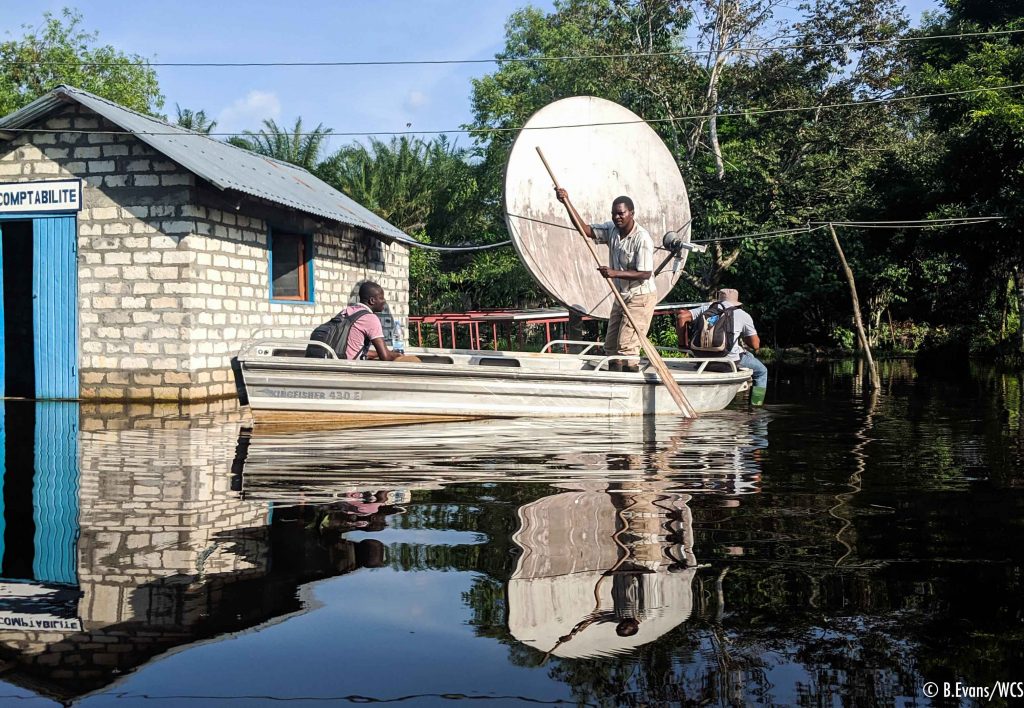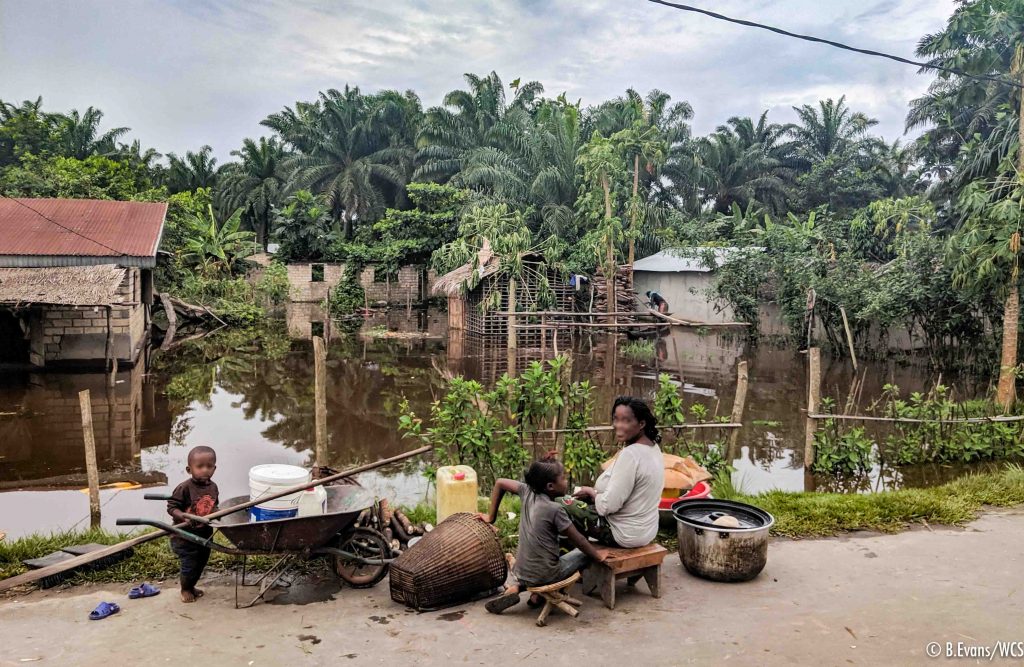Notes from the Field: Floods in Congo’s Peat Forests
From the air, the forest in Northern Congo looks like a vast, green carpet, broken only by tree falls and glimpses of streams. At this time of year, if you were to plunge beneath the canopy, you’d be faced with a bizarre mirror-world, with still black water reflecting the forest above and below. In the Congo’s north-eastern forests, rains fall onto deep layers of peat, sitting in a depressed area - the Congolese Cuvette, meaning bowl in French. Over the course of a few months, rivers rise, and peaty, black waters creep up under the dense forest canopy until the dry season when water recedes.

This annual rise is a key part of this ecosystem’s lifecycle - when fish migrate out of river channels deep into the forest to reproduce, ensuring the long term subsistence of most people in the reserve. These predictable cycles also provide people with a stable window within which to plant crops, set nets and gather building materials. Though data are lacking, this cycle may be a key part in fruiting of swamp forest trees, important sources of food for a broad range of wildlife including the dense population of gorillas found in these flooded forests.
This year however, it became clear that the rains would not stop on time. Rain kept falling, and water levels kept rising. Fields of cassava, situated on the few spots of high ground, gradually succumbed to the rising deluge. For weeks, people had to work overtime to rescue their crops so as not to lose their food.
”Each day, water reached further and further inland. Not a raging torrent or flash flood, but an unstoppable crawl, too slow to see moving.
Each day, water reached further and further inland. Not a raging torrent or flash flood, but an unstoppable crawl, too slow to see moving. Once the waters reached knee-depth, people had no choice but to abandon gumboots and moved on to a Venetian style water-taxi service, shuttling themselves between houses and offices using dugout canoes and kayaks. At their highest, the floods were the cause of social and humanitarian crisis, inundating entire villages and displacing about 50,000 people from their homes, bringing risks of disease, malnutrition and associated challenges to access to social services.
Wildlife too had to adapt and started to encroach into human spaces. At night, torchlight would show catfish and cichlids swimming around the front porch. Hammerkop birds, so-called for the shape of their hammer heads, waded through the garden picking off insects as ants looked for dry spots to rebuild their nests. Insects fled the rising waters; large, black ants built a nest in the shower, waving feelers in fury each time we wish to use it. Snakes wound into cracks in the walls, giving us early morning surprises.

These events are known in the area - people typically say they arrive once every decade or so. But this year, they say it seems different, part of a permanent change in the climate. All across the continent, floods have devastated vast areas, acutely affecting livelihoods, and ecosystems. The security of people’s livelihoods relies on predictability and diversity, with families tending to spread risk over different activities to ensure that if one fails, another may see them through.
Such unpredictability may well mean unforeseen impacts on wildlife and natural systems. Families often use fish and wild meat as a source of quick cash in the event of a family illness or emergency. As extreme weather events return more often, families may need to call upon these sources more and more frequently, or, in a worst case scenario, be unable to do so if the ecosystem is no longer a reliable provider of the needed resources.
Fishermen I’ve spoken to have already remarked that their catches have improved, earlier than normal. In the short term, the flood’s aftermath may provide some dividend. As surprises build on surprises, these are likely to be overshadowed by seasons with new rules that fish, forests and fishers find increasingly hard to follow.

Warmer water over the Indian Ocean has spurred higher rainfall everywhere from the Central African Republic, Kenya to Chad. These extreme high-water events, as well as ‘drought’ years like last years, are likely to become more and more frequent as climate change wreaks its havoc.
To help the 20,000 people who live in the Lac Télé Community Reserve adapt to these unpredictable changes, WCS Congo is putting in place sustainable environmental programs that will safeguard this crucial area, while improving the livelihoods of the reserve’s remote communities. Supporting the development of a sustainable fisheries management plan has been one of WCS’ priorities, by helping fisherwomen and men to establish local governance of fisheries activities. If it is not possible to predict climate change, it is in our power to learn how to adapt consequently. Learn more on WCS’ activities in Lac Télé Community Reserve.

